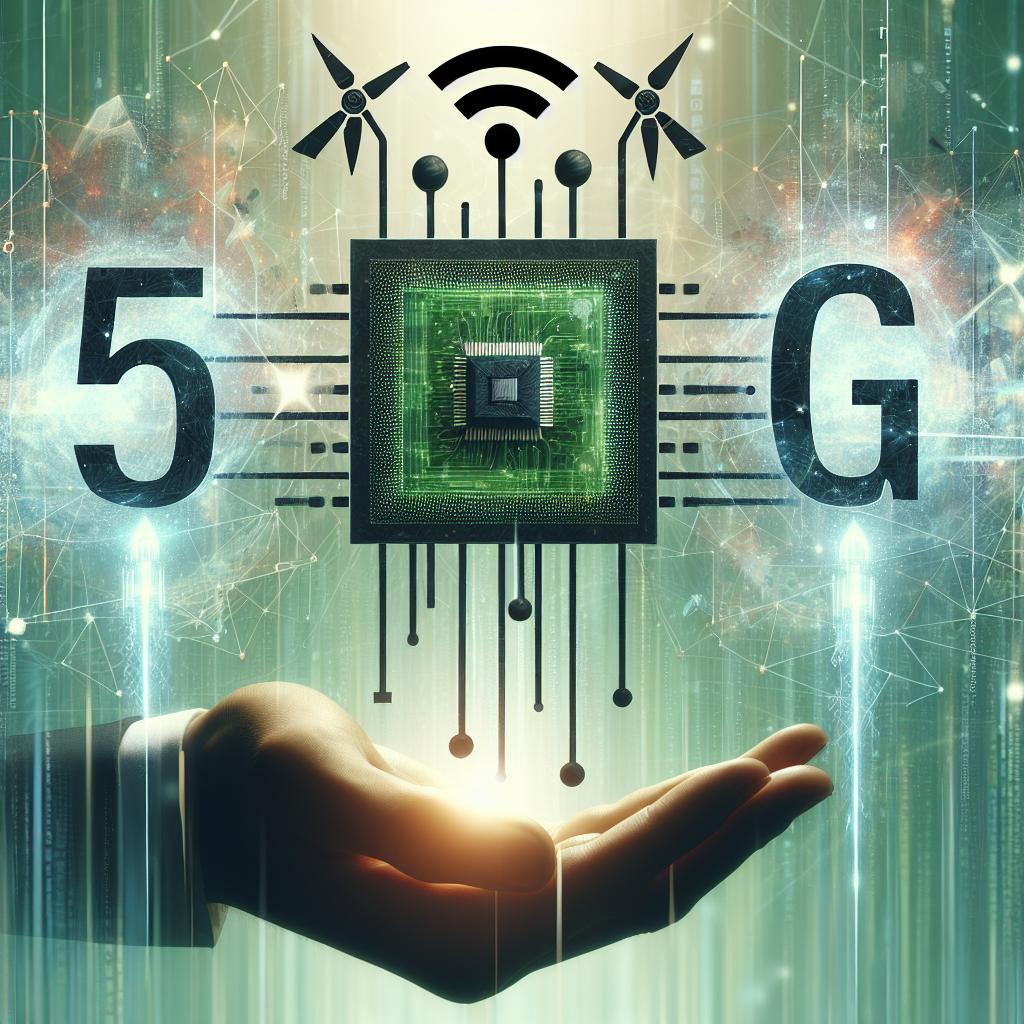Nvidia’s Ambitious Plans to Revolutionize 5G
In the ever-evolving landscape of telecommunications, one company stands at the forefront, aiming to reshape the realm of 5G technology: Nvidia. Known for its groundbreaking contributions to graphics processing units (GPUs) and artificial intelligence (AI), Nvidia is now setting its sights on the opportunities and challenges presented by 5G networks. As the world transitions to this next generation of wireless communication, Nvidia is taking strategic steps to ensure its technologies play a pivotal role.
To accomplish this significant shift, Nvidia understands it requires collaboration with industry giants such as Ericsson and Nokia. These telecommunications leaders possess the production capabilities, infrastructure, and expertise needed to bring Nvidia’s vision to fruition. Let’s explore Nvidia’s strategic approach and what it means for the future of 5G networks.
The Importance of 5G in Today’s World
5G technology is poised to revolutionize how we live, work, and communicate. It promises lightning-fast data speeds, ultra-reliable connections, and the capacity to connect a vast number of devices simultaneously. This is not just an upgrade from 4G; 5G represents a quantum leap in wireless technology with applications ranging from smart cities to autonomous vehicles.
Nvidia, with its expertise in high-performance computing, sees 5G as a fertile ground for innovation. By bringing its AI capabilities to the telecom sphere, Nvidia aims to enhance network efficiency, speed, and intelligence. This move could potentially unlock new services and revenue streams for telecom operators.
Nvidia’s Strategic Approach
Nvidia is leveraging its advances in AI and GPUs to meet the evolving needs of 5G networks. One of the key areas where Nvidia intends to make an impact is in network virtualization. Virtualized networks allow telecom operators to deploy software solutions on general-purpose servers, reducing the need for expensive, dedicated hardware. Nvidia’s expertise in GPUs and AI is integral to this transition, providing the computational horsepower required for these tasks.
Furthermore, Nvidia’s role in developing Open RAN (Radio Access Networks) is crucial. Open RAN is a new paradigm that disaggregates hardware and software, allowing vendors to create more flexible and cost-effective network solutions. Nvidia’s participation in this space could help accelerate the adoption of Open RAN, making it a cornerstone of 5G deployment.
Why Ericsson and Nokia’s Collaboration is Essential
While Nvidia brings cutting-edge technology and innovation to the table, Ericsson and Nokia provide the essential infrastructure and market reach. Both companies have spent decades establishing themselves as leaders in the telecommunications industry, with extensive expertise in building and maintaining networks.
For Nvidia, partnering with Ericsson and Nokia means accessing a wealth of industry knowledge and resources that can help navigate the regulatory and technical complexities associated with deploying 5G globally. It also provides Nvidia with a ready channel to market, allowing its technologies to be integrated into existing network infrastructures efficiently.
The Challenges Ahead
Despite the promise of 5G, there are significant challenges that Nvidia and its partners must address. First and foremost is the issue of standardization. For Nvidia’s vision of a virtualized network enhanced by AI to become a reality, industry-wide standards must be established to ensure interoperability among different networks and vendors’ devices.
Additionally, the transition to 5G represents a significant capital investment for telecom operators. Nvidia, Ericsson, and Nokia must demonstrate clear value propositions to justify these expenditures. According to industry experts, this involves showcasing tangible benefits such as increased operational efficiency, new revenue opportunities, and enhanced customer experiences.
Nvidia’s Role in a Broader Ecosystem
Nvidia’s interests in 5G extend beyond telecommunications alone. The convergence of 5G with AI, cloud computing, and the Internet of Things (IoT) has the potential to create a broader ecosystem of interconnected devices and services. This aligns with Nvidia’s vision of AI at the edge, where intelligent computing is conducted close to the source of data generation, such as smartphones or IoT devices.
Nvidia’s GPUs are well-positioned to support this evolution, enabling real-time processing and analysis of data across these devices. This capability could transform industries like healthcare, automotive, and manufacturing, where rapid decision-making is crucial.
The Future of 5G with Nvidia’s Influence
As 5G networks continue to mature, Nvidia’s influence is likely to grow. The company’s investments in AI-driven solutions, network virtualization, and collaboration with giants like Ericsson and Nokia suggest a future where Nvidia plays an integral role in the fabric of telecommunications.
Nvidia’s strategic initiatives could lead to more efficient networks capable of adapting to ever-increasing data demands while maintaining high levels of security and reliability.
Moreover, as Open RAN gains traction, Nvidia’s contributions to this field may redefine how mobile networks are built and operated, promoting a more competitive and innovative telecom industry.
Conclusion
Nvidia’s bid to reshape 5G is both ambitious and necessary, given the technological shift the world is undergoing. Through partnerships with industry stalwarts like Ericsson and Nokia, Nvidia is well-placed to meet the technical and business challenges inherent in this transformation. As 5G becomes ubiquitous, Nvidia’s technologies will likely be deeply embedded in our digital experience, driving innovation across industries worldwide.
For more insights into Nvidia’s involvement in 5G, you can read the full report from Light Reading here.

Hozzászólások